Bicycle frames are commonly made from either carbon fibre, aluminium, titanium, steel or a combination of these materials. Each material has different characteristics and will affect the cost, comfort, weight, stiffness, strength, durability and general 'feel' of the bike. It's worth noting that it's often how the chosen material is used by the engineers and manufacturers that matters most, and this is something that each brand will typically play with.
Before you jump in and decide on the best frame material consider the following factors;
Weight: Your bike needs to be strong enough to carry you and any extra luggage you plan on carrying in the form of panniers, racks or mounts. Each of the materials have different strength properties, fatigue rates and impact resistance but there is always a trade-off with weight and durability. Another aspect of weight to consider is how important having a light weight bike is to you. If you are chasing performance advantages then having a light weight bike should be high on your list.
The purpose of the bike: If you plan on racing then a stiff, light weight bike is the ideal choice, narrowing the type of material to choose from. Conversely, if you are touring or planning a riding adventure that requires long hours in the saddle and the ability to carry items, then durability is the priority and again, narrows the type of material to choose from.
The area you ride: It may not be apparent that your postcode could influence the type of material your bike is built from, but consider a material like steel that will rust in wet, humid climates. A material like aluminium might be a better choice given the conditions while still providing similar characteristics to steel.
How long you plan on having the bike: All materials will fatigue over time but some faster than others. Steel will rust if not taken care of but is more durable than aluminium over the long term. Carbon fibre and titanium frames have exceptionally high fatigue rates meaning they will last and last and last.
Your budget: Budget is often the biggest factor in choosing a bike and consequently its material. As a generalisation, in order of most expensive to least expensive, titanium takes the cake, followed by carbon fibre, aluminium and steel. As always, the trade off between what you are willing to spend for what outcome is the key consideration.
To help provide more clarity on the various bike frame materials available, we've summarised each material type, its properties, characteristics and how it influences ride quality.
Carbon Fibre
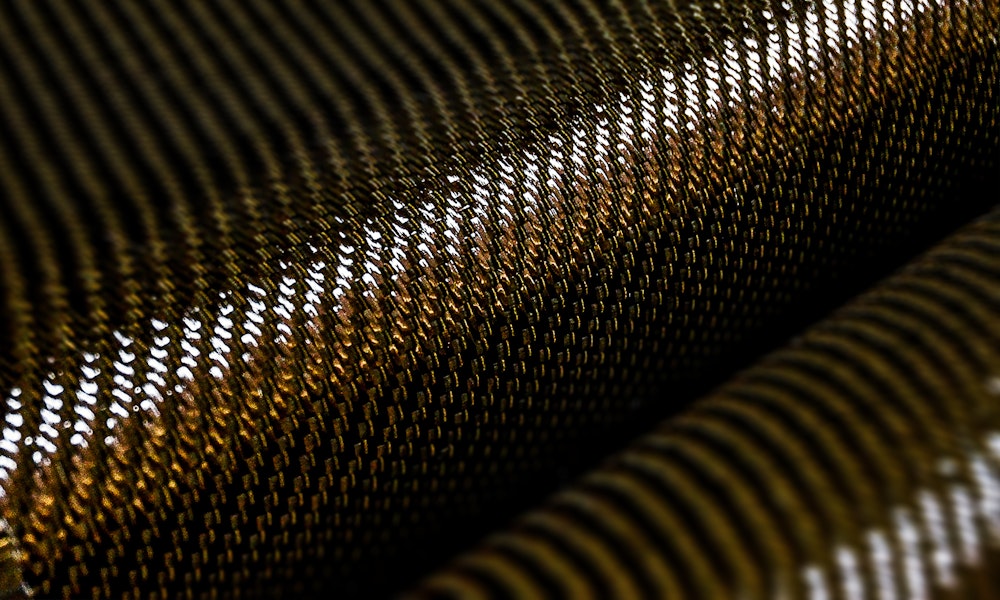
Carbon fibre is undoubtedly the wonder material for modern day bikes regardless of the discipline, thanks to its high stiffness to weight ratio, ability to customise frame shapes, high resistance to fatigue and the experimentation it affords manufacturers to create whatever product they desire. While some materials are hard to work with and have limited design capacity, carbon fibre is easily mouldable and can be shaped in almost anyway to meet the manufacturers indented design. The ability to customise shapes and the way the material is used can make bike frames aerodynamic, stiff yet compliant, and lightweight.
Carbon fibre rose to prominence in the early 1990's after being introduced to professional cycling in the late 1980's. The material was hailed for its lightweight properties in comparison to steel frames of the time, and quickly became the material of choice. Initially the high cost, quality of carbon composites and manufacturing methods were a barrier to wide spread use, but all of those have steadily improved over time to where carbon fibre can be used not only for bikes frames, but practically everything on a bike. In addition to its performance benefits, when built correctly it offers superior fatigue resistance results compared to other materials.
Pros of Carbon Fibre: High stiffness to weight ratio, finite control over use of material, directional, low thermal expansion, corrosion resistance, durability, strength.
Cons of Carbon Fibre: Labour and knowledge to manufacture, failure potential if fractured
When referring to carbon fibre in bikes, it's important to understand that the end product is actually a composite material made from the carbon fibres themselves and a resin, which acts like a glue or binding substance to hold and reinforce the fibres together. Far thinner than a strand of hair, the thickness of the carbon fibres vary greatly. These individual carbon fibre strands (filaments) are wound together in a 'tow', which is then typically woven into fabric-like sheets. Resin is often the weak and inflexible component of the composite and so the goal is to get the tows bonded as close to each other as possible.
Carbon fibre used in bicycles is often unidirectional and so the angle at which it is layered is of the utmost importance. Layering the fibre at specific angles will create strength and stiffness in the direction it is needed. For example if the forces placed on the frame are opposed to the direction of the layup, it becomes strong and resistant to the force. However if the fibres are layered on a angle where fibres can not oppose the force, it will flex. The key with layering is to create stiffness and strength where its needed, while providing flex in other locations where required – something the industry often dubs 'compliance'. Other parts of the frame, or just cheaper carbon frames, may use 'woven' carbon-fibre, which provides similar characteristics in all directions that it is laid.
The type of carbon fibre is an important consideration to the final product, but not as important as to how it's used. Carbon fibre is either stiff or strong, but it can't be both. As a result when engineers are designing a frame they need to place stronger fibres to areas of the bike where strength is required, such as the headtube. At this location the fibres need to be able to absorb high stress to avoid fracturing. Other areas of the frame need to be stiffer to optimise power transfer, like the bottom bracket for example. Here, higher end frames will use high stiffness fibres referred to as 'High Modulus' or 'Ultra High Modulus'. It's worth noting that there is no standard naming convention for carbon fibre, and so what one brand claims to be 'Ultra High Modulus' is unlikely to match what another brand claims.
Some high end frames, such as Merida's Big-Nine, claim to be made of approximately 400 individual pieces of carbon fibre. The complex process of choosing the right carbon fibre, reinforced with the best resin, the right layering technique, fibre direction and moulding method will ultimately decide the performance of the bike. It's never a single one of these factors that make for a good carbon fibre frame, and so it's crucial to keep that in mind when brands are selling on carbon fibre thread counts and the like.
The downfall of carbon fibre is it can crack under excessive stress to an area such as impact from a crash or over tightening bolts. Once the integrity of the carbon has fractured, the material can become extremely fragile and dangerous to use. At this point it either needs to be repaired or replaced.
How it's made
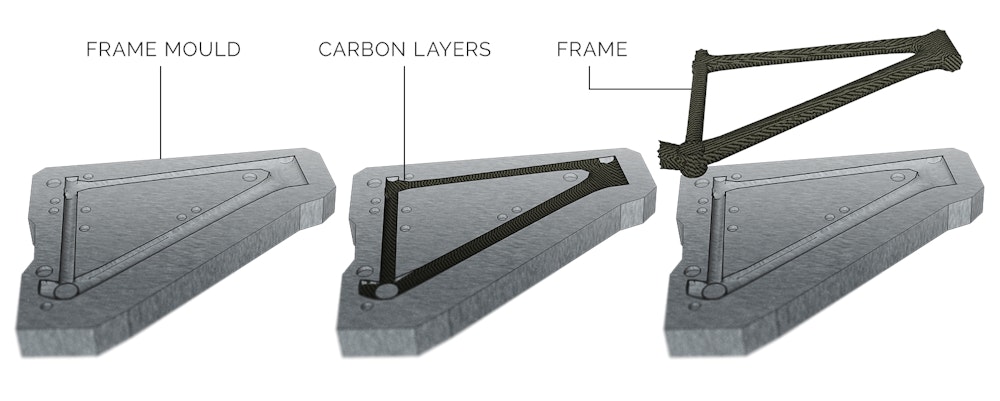
Carbon fibre comes on a spool and looks like wool, string or other soft material. The carbon fibre is generally lined up together parallel and along with the resin combined in a unidirectional fashion to create large sheets of carbon fibre. This is then cut to size to be used to make the frame, or other components.
The most common way of creating a bike frame from carbon fibre is the use of a mould and bladder. Creating the mould for the frames is a lengthy process requiring extensive research and development to ascertain the elements required to achieve the desired outcome. For example an aerodynamic bike will require a different mould to an endurance bike, which requires different testing and analysis protocols. Each bike size made requires its own mould too.
Once the moulds have been created, the carbon fibre composite is layered into the mould to manufacturers instructions on thickness, overlay, lay up, direction and type. Aside from the actual cutting of the carbon fibre sheets, this whole process requires extensive manual handling to be completed to specification, even the largest manufacturer has an army of workers constructing carbon fibre materials around the clock to keep up with demand. Any wrinkle in the carbon from poor compaction is a potential point of failure and so a bladder, normally latex is placed inside and expanded to create smooth joins. Foam is also used to exert pressure from the inside of the mould in a similar way. It is then left to 'cure' (typically at heat) where it bonds together and hardens. The frame is then removed from the mould, quality checked, cleaned up, painted and becomes the frame you see on the road.
There are other less common methods of creating carbon fibre frames; 'tube to tube’ construction which doesn’t require a mould, instead individual tubes are wrapped together to create the end product. Another option which can also be the case for aluminium, steel and titanium construction is the use of lugs which sees tubes bonded (glued) into joining parts, the BMC Impec and Colnago C range are great examples of this. And another option is what French-manufacturer Time does, which is weave the carbon around a tube, and then inject high-pressure resin in with a special mould.
Each method has its pro's and con's, primarily centred around cost and manufacturing expertise.
Here's a short clip of the procedure Time use when creating their bike frames. This is quite different to how most frames are made
Aluminium
Aluminium bike frames are perhaps the most common in the modern bicycle industry, with the material widely used for various components too. Aluminium as a material isn't very dense so it can be formed into lightweight structures, making it perfect for bike frames. Aluminium frames are relatively cheap to manufacture, especially compared to carbon fibre frames which are said to take approximately 14x longer to produce.
Pros of aluminium: Cost and ease to manufacture, strength to weight ratio, corrosion resistance.
Cons of aluminium: Difficult to repair, fatigue life
As with carbon fibre, aluminium comes in multiple forms and is always 'alloyed' with a small percentage of other metals and minerals added. Beyond material choice, recent developments in manufacturing techniques have seen customisation of frame design and subsequent ride quality come leaps and bounds. In addition to manipulating of tube shapes, the thickness of the tube walls themselves can be manipulated to create lightweight and stiff structures. The outcome is referred to as 'butting' and essentially thins the centre of the tubes for weight reduction, while keeping the ends strong for the welding point.
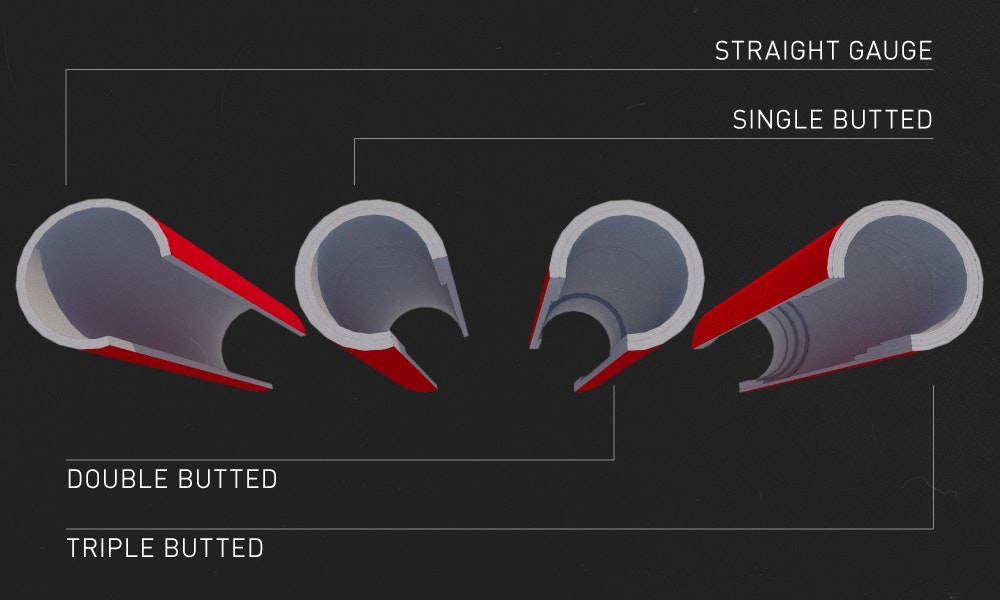
Straight gauge tubes don't have any varied tube thicknesses providing consistent strength properties, whereas as single, double and triple butted tubes create different thicknesses that allow the frame to handle high stress points at the end of the tubes without having additional weight through the middle. Single butted tubes will be thicker at one end where strength is only needed at a specific location, the bottom bracket junction of a seat tube for example. Double butted tubes are thicker at both ends, the downtube for example where additional strength is required at the bottom bracket junction and headtube. Triple butted tubes serve the same purpose as double butted tubes but further reduce weight in the centre. The additional manufacturing required to achieve varying tube thickness increases the cost so the cheapest frames will be straight gauge, while the highest quality aluminium frames will typically feature triple butting.
As well as butting, aluminium frames can be manipulated by a process known as hydroforming. Hydroforming is a way of shaping metals through the use of a mould and fluid. The aluminium tubing is placed into a mould that is a specific shape. Pumps then inject fluid at extremely high pressures causing the aluminium to press into the mould and take the intended shape. This technique is commonly be used to optimise tube shapes for additional stiffness without requiring extra material to be used as reinforcement.
Manipulating frame design can achieve a lightweight bike, that is stiff and compliant at the same time. With a low density, at the same thickness it's not as strong as steel, but is much lighter and is more resistance to corrosion.
The downside of aluminium is that is will fatigue overtime quicker than carbon fibre, steel and titanium. If designed and treated properly, this could potentially be a lifetime, but it's worth consideration if you are purchasing or building a 'forever' bike.
Choosing an aluminium frame is the most cost effective solution for those seeking performance on a budget.
How it's made
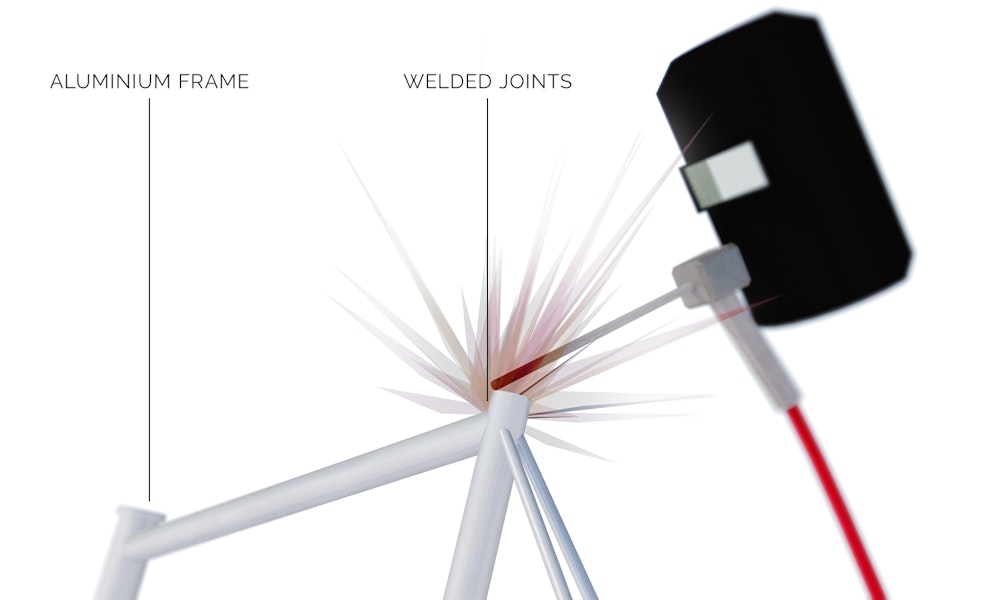
Once the tubes have been manipulated and butted (or not) they need to be joined together, this is commonly done via welding.
TIG welding is the most common process and gives manufacturers a chance to showcase their expertise. TIG welds use the same material as the frame and the aim is to create a smooth, thick, even weld around the diameter of the connecting tubes. Poor workmanship will see the weld be varied with uneven thickness and have gaps around the diameter of the tubes. The top manufacturers in the world now use robotic welders for absolutely consistency.
Steel
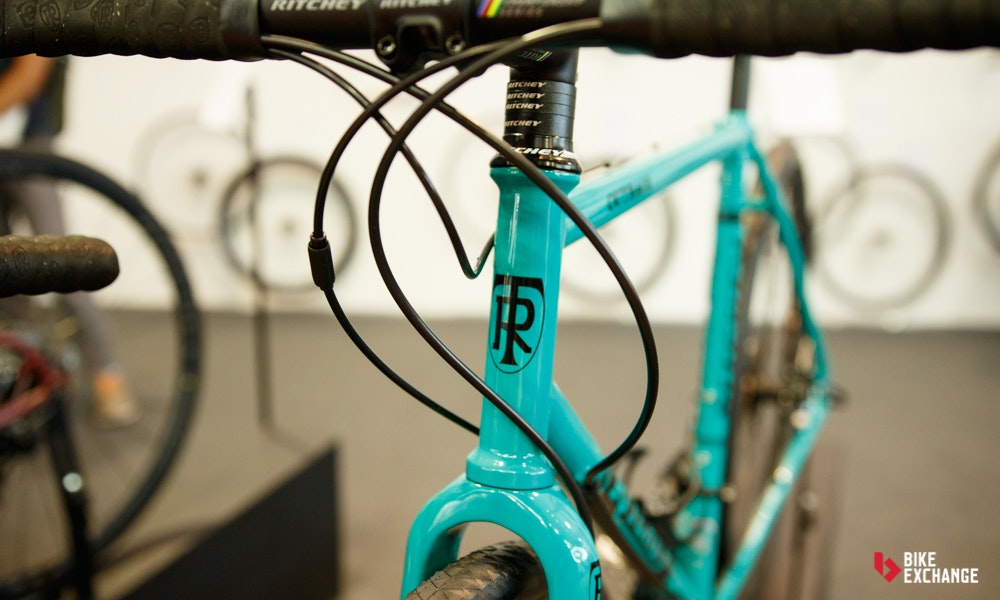
Ah steel, the no fuss workhorse of bike frame materials. Steel was practically the universal choice of racing bike frames until aluminium appeared in the 1970's and 1980's and then carbon fibre took over in the 1990's.
There are two distinct types of steel used in the bicycle industry. The first is high tensile, or otherwise known as 'Hi-Ten', this is a cheaper grade steel commonly found in cheaper bikes, especially those from department stores. It offers an incredibility poor strength-weight ratio and so frames will only use this material in order to hit a low price. By comparison, higher-end steel bikes are likely to use chromoly (generally short for chrome molybdenum) steel, which as an alloyed steel offers superior strength properties to Hi-Ten and so can be butted and made thinner/lighter.
Steel is inexpensive, exceptionally durable, highly resistant to fatigue, easily repaired and easy to work with. Unlike carbon fibre and aluminium, damage to a steel frame can be easily repaired and broken welds can be re-welded together. Somewhat surprisingly despite its strength, steel offers good levels of compliance thanks to its elastic properties. The downside of steel is that it can rust and is heavier than other materials.
Touring and adventure bikes are commonly made from steel thanks to their exceptional durability and strength, enabling riders to carry large amounts of luggage without compromising the bikes performance. Steel also features heavily on entry level and recreational bikes where weight isn't such an important factor.
Pros of steel: Cost and ease to manufacture, strength, durability.
Cons of steel: Weight, corrosion resistance.
How it's made
Joining steel tubes together involves similar welding processes to aluminium frames, but further options exist including 'Brazing' and the use of lugs. Brazing is similar to TIG welding but uses a 'filler' material that is melted and used to join the tubes. The filler material is commonly silver or brass but could be a myriad of other alloys too. Lugs act as connectors at junction points of the frame, creating a sleeve for the tubes to slide into. Prior to constructing the frame, the ends of the steel tubes are precisely cut to fit perfectly into the lugs and are then brazed together. Using lugs creates an immensely strong join, and being an older manufacturing technique, helps to provide a bike with that 'classic' look.
Steel frames are perhaps the easiest frames to repair due to the availability of the equipment and supplies, as well as the materials resistance to repeated heat. For this reason, steel is a great option for commuters, recreational cyclists and touring riders that need a highly durable bike.
Titanium
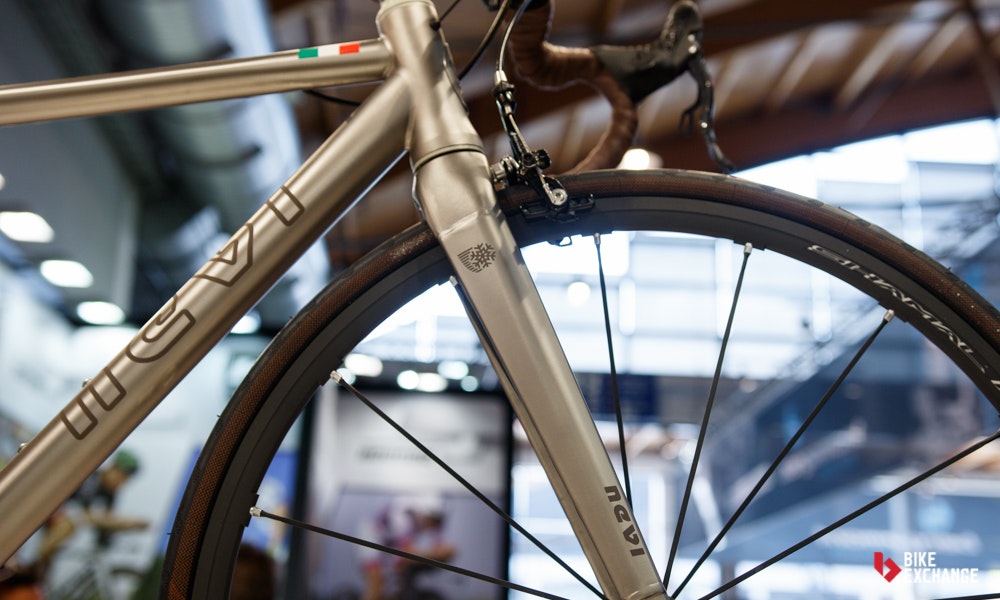
Titanium shares many properties with steel but is lighter, more corrosion resistant and more durable. The downside is it is much more expensive and takes significant expertise to produce a high quality bike frame. Like aluminium and steel, the titanium used in bicycles is an 'alloy', and will typically feature a small percentage of aluminium and Vanadium in its composition.
Titanium never really had its time to shine given it became a usable material for bike frames around the same time as aluminium and carbon fibre, both more affordable and easier to work with. Nevertheless, titanium has a better stiffness to weight ratio than steel, offers similar compliance to carbon fibre, and is virtually indestructible. Almost all titanium frame manufacturers offer a lifetime warranty against manufacturing defects as a result.
Pros of titanium: Strength, durability, corrosion resistance, ride quality, weight
Cons of titanium: Cost of material, difficulty to manufacture
How it's made
Titanium follows closely to how an aluminium or steel frame is made. Once the tubes are formed and/or butted, they are then commonly commonly TIG welded together. However the welding process is different as the titanium reacts poorly to oxygen, and so the section being welded is typically made air tight, and Argon gas is pumped in to purge out the oxygen during welding. Some brands go as far to create completely oxygen-free chambers which are filled with argon.
In addition to the material being labour intensive and just more expensive in its raw state, titanium is far tougher on tooling (harder to cut, manipulate) too. No wonder it's typically only offered by smaller, boutique and custom bike builders.
Now that you are across the different frame materials, check out other BikeExchange guides to provide all the info you need to know;
Follow BikeExchange: Email | Facebook | Twitter | Instagram | YouTube | STRAVA





